Mikhail Stepnov
DetIE: Multilingual Open Information Extraction Inspired by Object Detection
Jun 24, 2022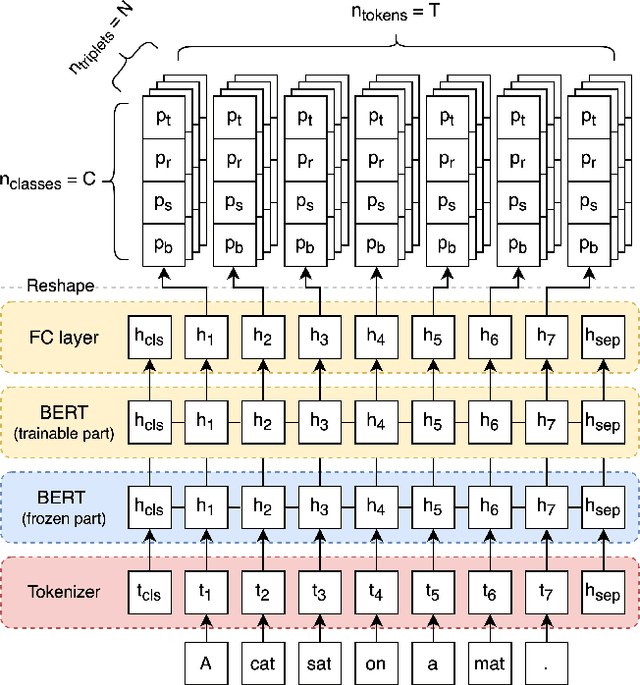

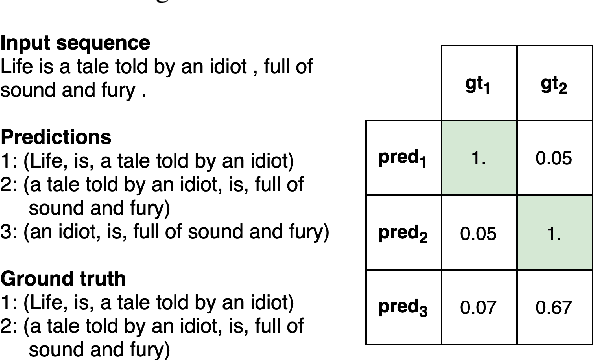
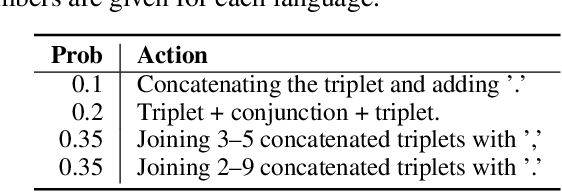
Abstract:State of the art neural methods for open information extraction (OpenIE) usually extract triplets (or tuples) iteratively in an autoregressive or predicate-based manner in order not to produce duplicates. In this work, we propose a different approach to the problem that can be equally or more successful. Namely, we present a novel single-pass method for OpenIE inspired by object detection algorithms from computer vision. We use an order-agnostic loss based on bipartite matching that forces unique predictions and a Transformer-based encoder-only architecture for sequence labeling. The proposed approach is faster and shows superior or similar performance in comparison with state of the art models on standard benchmarks in terms of both quality metrics and inference time. Our model sets the new state of the art performance of 67.7% F1 on CaRB evaluated as OIE2016 while being 3.35x faster at inference than previous state of the art. We also evaluate the multilingual version of our model in the zero-shot setting for two languages and introduce a strategy for generating synthetic multilingual data to fine-tune the model for each specific language. In this setting, we show performance improvement 15% on multilingual Re-OIE2016, reaching 75% F1 for both Portuguese and Spanish languages. Code and models are available at https://github.com/sberbank-ai/DetIE.
Many Heads but One Brain: an Overview of Fusion Brain Challenge on AI Journey 2021
Nov 22, 2021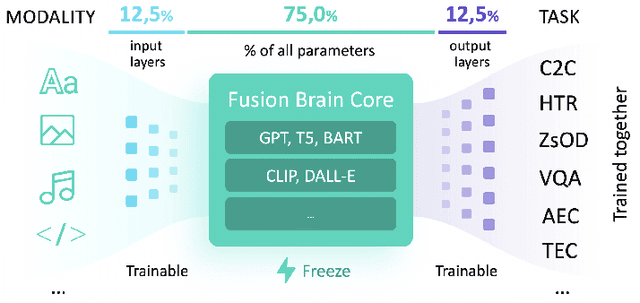
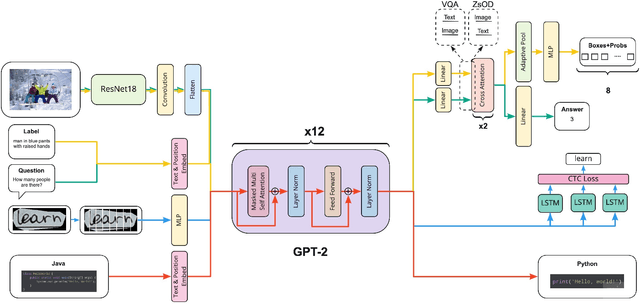
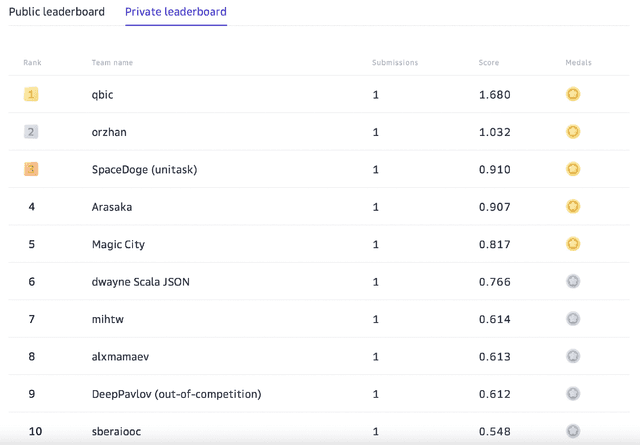
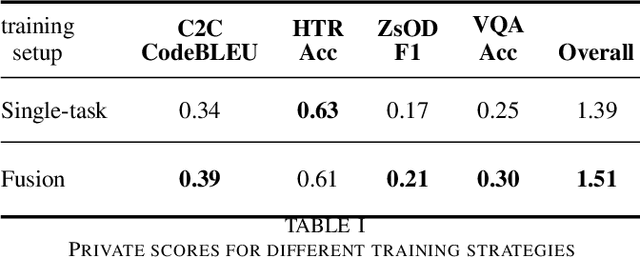
Abstract:Supporting the current trend in the AI community, we propose the AI Journey 2021 Challenge called Fusion Brain which is targeted to make the universal architecture process different modalities (namely, images, texts, and code) and to solve multiple tasks for vision and language. The Fusion Brain Challenge https://github.com/sberbank-ai/fusion_brain_aij2021 combines the following specific tasks: Code2code Translation, Handwritten Text recognition, Zero-shot Object Detection, and Visual Question Answering. We have created datasets for each task to test the participants' submissions on it. Moreover, we have opened a new handwritten dataset in both Russian and English, which consists of 94,130 pairs of images and texts. The Russian part of the dataset is the largest Russian handwritten dataset in the world. We also propose the baseline solution and corresponding task-specific solutions as well as overall metrics.
 Add to Chrome
Add to Chrome Add to Firefox
Add to Firefox Add to Edge
Add to Edge